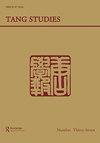STORIES AND STORYTELLERS IN A CHANGING WORLD: MANLING LUO'S LITERATI STORYTELLING IN LATE MEDIEVAL CHINA
IF 0.5
0 ASIAN STUDIES
引用次数: 0
Abstract
The heterogeneity of the anecdotes and stories that remain to us from late medieval China is both a blessing and a curse for the modern reader. The diversity of information and viewpoints encompassed within this body of material makes it a rich resource for understanding how people of the time (especially elite men) envisioned recent events, other members of their community, and social, literary, religious, and broader cultural practices. But this very diversity also makes the corpus unwieldy, comprised as it is of thousands of individual accounts written for different purposes and from different perspectives. Although some items are artfully wrought, these narratives were not recorded primarily as belletristic literature; nor can we assume them to be reliable accounts of historical events, though they contain valuable historical information. Rather, through these accounts a multiplicity of voices speaks to us from over a millennium ago, some more purposefully than others, by turns amusing, shocking, or moving us—and at times almost certainly perplexing us as we strive to makes sense of the cast of characters arrayed before us, the relationships among them, and the significance of their actions. To distill from this cacophony what individual voices are trying to say to us, or what in aggregate it tells us about their era, is no easy task. Manling Luo’s recent book Literati Storytelling in Late Medieval China is important because it seeks to do precisely this. Luo uses an array of narrative works by elite male writers (and one non-elite work) dating from the mid-eighth to the midtenth centuries to examine how scholar-officials of the era envisioned their place in a world in which routes to professional success and the composition of the elite were changing in the decades after the An Lushan rebellion. She situates her exploration of individual works within a broader framework in which the stories themselves were both a response to and an agent of ongoing social transformations. This framework has three parts. First, Luo identifies these changes in elite male life as the very raison-d’être for the stories, writing, “The central argument of this book is that stories flourished after the rebellion because of the radical changes experienced by contemporary scholar-officials going through the watershed reconfiguration of the Chinese elite” (5). Second, Luo argues that such accounts not only reflect literati Tang Studies, 33. 111–128, 2015变化世界中的故事与说书人:中国中世纪晚期罗曼玲的文人说书
中世纪晚期中国遗留下来的各种各样的轶事和故事,对现代读者来说既是一种祝福,也是一种诅咒。这些材料中包含的信息和观点的多样性使其成为了解当时人们(特别是精英男性)如何设想最近发生的事件、他们社区的其他成员以及社会、文学、宗教和更广泛的文化实践的丰富资源。但是,这种多样性也使语料库难以处理,因为它是由成千上万的个人账户组成的,这些账户出于不同的目的,从不同的角度写的。虽然有些项目是精心制作的,但这些叙述主要不是作为文学作品记录的;虽然它们包含有价值的历史信息,但我们也不能假设它们是对历史事件的可靠描述。更确切地说,通过这些叙述,来自一千多年前的多种声音向我们诉说,其中一些声音比另一些声音更有目的性,时而有趣,时而震惊,时而感动我们——当我们努力理解摆在我们面前的人物角色,他们之间的关系,以及他们行为的重要性时,我们几乎肯定会感到困惑。要从这种不和谐的声音中提炼出个人的声音试图对我们说什么,或者它总的来说告诉我们关于他们的时代的什么,不是一件容易的事。罗曼玲的新书《中世纪晚期中国的文人讲故事》很重要,因为它正试图做到这一点。罗用八世纪中叶到十世纪中叶的一系列精英男性作家的叙事作品(以及一部非精英作品)来考察那个时代的士大夫如何设想他们在安禄山叛乱后几十年里通往职业成功的道路和精英的组成正在发生变化的世界中的地位。她将自己对个人作品的探索置于一个更广泛的框架中,在这个框架中,故事本身既是对正在进行的社会变革的回应,也是一种媒介。该框架由三部分组成。首先,罗认为精英男性生活的这些变化是这些故事的être的真正原因,他写道,“本书的中心论点是,由于当代士大夫经历了中国精英的分水岭重组,这些故事在叛乱后蓬勃发展”(5)。其次,罗认为这些叙述不仅反映了文人唐学,33。111 - 128年,2015年
本文章由计算机程序翻译,如有差异,请以英文原文为准。
求助全文
约1分钟内获得全文
求助全文

 求助内容:
求助内容: 应助结果提醒方式:
应助结果提醒方式:


